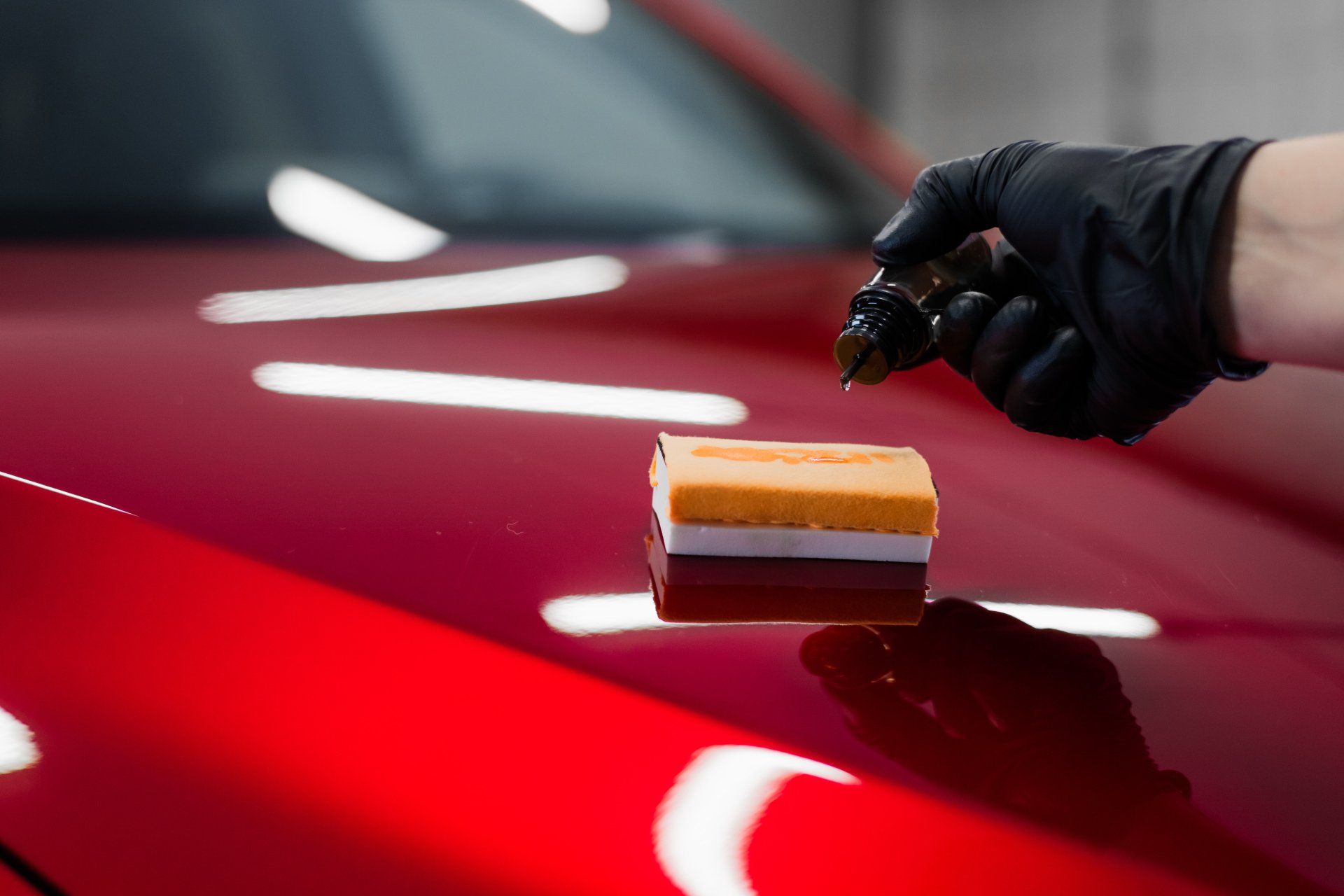Enjoy Superior Hydrophobic Properties with Advanced Ceramic Coating
Wiki Article
Explore Just How Ceramic Covering Can Change Your Automobile's Surface area and Efficiency
Ceramic layer represents a substantial development in auto surface security, offering a long lasting, hydrophobic barrier that enhances both appearance and longevity. As we check out the details of ceramic layer, the implications for your car's performance and visual appeal become increasingly engaging.What Is Ceramic Layer?

The application process involves complete surface area preparation, including washing, polishing, and sanitizing the paint to guarantee ideal bond. Once the surface prepares, the ceramic finish is meticulously applied, enabling appropriate healing and bonding. This process not just boosts the car's visual appeal yet also provides an included layer of protection against ecological impurities such as dust, UV rays, and chemicals.
Ceramic layers are available in various formulas, satisfying various requirements and preferences. Their flexibility makes them suitable for a wide array of cars, from everyday vehicles to premium deluxe versions. Consequently, ceramic finishing has ended up being progressively popular amongst cars and truck lovers and everyday motorists alike, looking for to preserve their car's appearance and stability over time.
Key Advantages of Ceramic Finishing
The application of ceramic finishing provides various benefits that add to lorry long life and aesthetic charm. One of the main advantages is its exceptional security against environmental pollutants. Ceramic layers produce a hydrophobic surface that repels water, dirt, and grime, making it substantially easier to clean up and maintain the lorry's exterior. This feature helps preserve the paintwork, reducing the risk of scratches and swirl marks.
An additional significant benefit is the enhanced gloss and deepness that ceramic coverings convey to the lorry's coating, developing a spectacular visual allure. The toughness of ceramic finishings is unparalleled when compared to standard waxes and sealants, typically long lasting several years with appropriate maintenance. On the whole, the crucial advantages of ceramic coating make it an important selection for lorry owners looking for optimal security and visual improvement.
How Ceramic Layer Functions
At its core, ceramic finishing features by developing a chemical view it now bond in between the coating and the lorry's paint surface. This bond is created through a procedure called sol-gel innovation, where liquid polymers are related to the surface and ultimately treatment to create a long lasting, safety layer. The outcome is a semi-permanent finishing that enhances the vehicle's appearance while offering a solid defense versus environmental contaminants.The ceramic finishing is made up of silica dioxide (SiO2) and occasionally titanium dioxide (TiO2), which are key parts that offer remarkable solidity and hydrophobic homes - Ceramic Coating. When cured, the finishing forms a dense, glass-like description layer that wards off water and dirt, making it significantly less complicated to preserve the vehicle's cleanliness. Additionally, this barrier shields against UV rays, oxidation, and chemical spots, eventually prolonging the life of the paint
An additional essential element of exactly how ceramic finish works is its capacity to complete microscopic flaws in the car's paint surface. This smoothing effect improves the overall gloss and radiate, offering a visually appealing surface that lasts longer than typical waxes or sealers. The outcome is a vehicle that not only looks better however is additionally far better secured versus the components.
Application Process Discussed
Understanding the application process of ceramic layer is crucial for accomplishing ideal outcomes. An appropriate surface area is important, as any kind of flaws can compromise the finish's performance and durability.As soon as the surface is clean and dry, a paint adjustment may be done to deal with any kind of swirl marks or scrapes. This action is important, as the ceramic layer will this article secure in the surface's condition. After adjustment, the lorry is wiped down with an isopropyl alcohol solution to get rid of any type of continuing to be oils or deposits.
Following, the ceramic covering is used in small sections, utilizing either a foam applicator or a microfiber towel. Ceramic Coating. The finishing is spread out evenly and enabled to bond with the surface for a specified curing time, which can differ based on the product utilized. Complying with application, the lorry is typically left in a regulated atmosphere to heal totally. This careful process guarantees that the ceramic coating sticks effectively, providing the preferred defense and boosting the car's appearance.
Maintenance Tips for Longevity
Proper upkeep of your car's ceramic layer is important for maximizing its longevity and effectiveness. Avoid automatic vehicle washes with harsh brushes, as they can compromise the coating's stability.
Furthermore, think about periodic examinations for any kind of indications of wear or damage. Dealing with issues promptly can stop a lot more substantial fixings down the line. Stay clear of revealing the car to extreme problems, such as long term sunshine or rough chemicals, which can deteriorate the finishing.
Lastly, keep in mind that while ceramic finishes offer significant defense, they are not completely impervious. Ceramic Coating. Normal maintenance and attention to information will certainly guarantee your lorry keeps its aesthetic and performance benefits for several years to find
Conclusion
In summary, ceramic finishing stands for a significant improvement in car surface security and efficiency improvement. Its capacity to produce a long lasting, hydrophobic layer facilitates the repulsion of water, dust, and grime while supplying a shiny surface that elevates aesthetic appeal. The durable nature of ceramic coverings not only safeguards against UV rays and ecological pollutants but also decreases upkeep initiatives, eventually extending the lifespan of a car's paintwork and guaranteeing it remains in optimal condition for many years.Report this wiki page